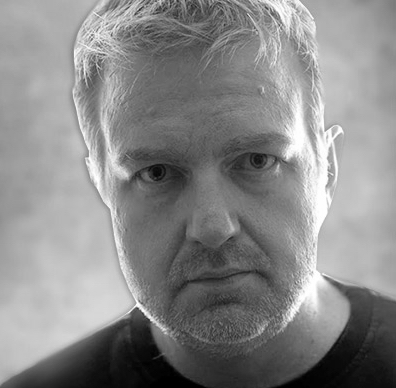Episodes

Wednesday May 22, 2019
Fab Stanghieri, Cineplex Digital Media
Wednesday May 22, 2019
Wednesday May 22, 2019
Canadians all know Cineplex as the dominant movie theater chain in that country, and the Toronto-based company has also been expanding its reach, in recent years, into other related lines of business.
Cineplex now has entertainment-centric restaurant-bars, is bringing Top Golf into Canada, sells out of home media and runs a thriving digital media group that's doing most aspects of digital signage for major enterprise customers in Canada and beyond those borders.
Fab Stanghieri was a senior real estate guy with Cineplex, charged with building and managing the company's movie house portfolio. He had digital media added to his responsibilities a few years ago, and while it was unfamiliar territory at first, he's embraced digital to a degree that it is now his primary focus in the company.
I was passing through Toronto a couple of weeks ago, and Fab kindly took some time to show me around new office space, which is set up to help ideate, deliver and manage digital signage solutions for Cineplex clients.
Subscribe to this podcast: iTunes * Google Play * RSS

Wednesday Jan 16, 2019
Leo Resig, Chive Media
Wednesday Jan 16, 2019
Wednesday Jan 16, 2019
The big selling point for Chive TV is that the streaming channel's five-hour mix of curated social media content keeps butts in barstools.
The Austin, Texas-based company has some 4,000 bar and restaurant venues running content on one or many of their TVs, and about 500 more come on monthly - with a lot of that growth through word of mouth.
Now Chive has broadened its free streaming content offer beyond just bars - adding venues like gyms, medical clinics and workspace break rooms. There will soon be 10 different channels of content on what's now branded as Atmosphere TV.
Chive was founded about a decade ago by two brothers, and I spoke with one of them - Leo Resig - about how it all started, why they created a streaming TV channel, and how charitable work is a big part of what they do.
Subscribe to this podcast: iTunes * Google Play * RSS

Wednesday Dec 19, 2018
Kim Sarubbi, Cannabis Medical Network
Wednesday Dec 19, 2018
Wednesday Dec 19, 2018
Screens in medical waiting rooms is one of the most well established kinds of digital OOH media, and there's been no end of companies that developed networks built around advertising-supported content.
That's now happening in the United States with medical cannabis clinics, through a pair of signage industry vets who have applied what they learned in mainstream medical centres to clinics focused on cannabis products - as alternatives to things like opioid medications.
Kim Sarubbi has been working with Phil Cohen on medical center content for a quarter century, and answered Cohen's call when he said he was getting back into waiting rooms aimed at the emerging cannabis market, via the Cannabis Medical Network.
They are already in roughly 1,000 clinics with a screen, media player and custom-created content that's designed to educate patients about the potential benefits of cannabis for battling things like PTSD or easing the pain or effects of cancer, epilepsy or other diseases.
I spoke with Sarubbi about the challenges of operating in a still emerging industry and market where the rules can vary, the product gets looked at with raised eyebrows, and the snake oil crowd can easily intermingle with the makers of much more proven and established products and treatments.
Subscribe to this podcast: iTunes * Google Play * RSS

Wednesday Dec 12, 2018
Kaan Gunay, Firefly
Wednesday Dec 12, 2018
Wednesday Dec 12, 2018
There's nothing new about media on taxi tops, but a San Francisco start-up called Firefly is trying to go about it with a different approach.
Firefly describes itself as the first mobility-based SmartScreens platform - an advertising media firm that gets it footprint and scale from the rideshare industry.
Firefly is working primarily with the drivers for services like Uber and Lyft, offering a supplemental revenue stream in return for fixing a hyper-local, geo-fenced digital sign on the cartop. Firefly absorbs the capital cost, and spins off an average of $300 a month to the driver. That money isn't huge, but it can be enough to significantly offset leasing or insurance costs and make driving for a living worthwhile.
Co-founder Kaan Gunay is a mechanical engineer by training, but in recent years has found his way to Stanford, where he got his MBA and where the roots of Firefly first developed. He's also very active in community good works, and we spoke about how continuing that was, and is, fundamental to how Firefly does things.
At least 10 percent of all media on screens goes to to promote and advertise local not-for-profit organizations and provide public service announcements for non-commercial entities such as charities.
The car-toppers have sensors - for things like air quality - that generate data that's open for government planners, and others, to use.
I spoke with Gunay last week, just as his company was announcing a big $18.5 million seed funding raise.
Subscribe to this podcast: iTunes * Google Play * RSS

Wednesday Oct 03, 2018
Peter Livesey, Esprit Digital
Wednesday Oct 03, 2018
Wednesday Oct 03, 2018
Anyone with technical chops who uses a subway system to get around would understand that those are seriously challenging environments to put in sensitive display technology - and the UK display technology company Esprit Digital effectively got its start in digital signage doing just that.
If you have been in the signage market for a few years, or if you have used the subway systems in big cities like London, you'll know about the synchronized digital posters in many of the escalator sections. The most well-known are those in the London Underground, which were put in by Esprit many years ago and are still working.
The company, based north of London, has built out its business from everything it learned about heat and airborne grime and ruggedization, and has since developed products for shopping mall concourses, sidewalk ad posters and all kinds of other challenging scenarios.
I spoke with CEO Peter Livesey about the roots of the company, which go back to really low-rez LED signs for retail, and how the company has gone full-circle and added fine pitch indoor and outdoor LED screens to its product line.
Subscribe to this podcast: iTunes * Google Play * RSS

Wednesday Aug 15, 2018
Kyle Pilot, iGotcha
Wednesday Aug 15, 2018
Wednesday Aug 15, 2018
I was in Montreal recently and had a chance to visit the offices of iGotcha, a digital signage and experiential media solutions company that has very quietly built up a nice book of business since launching in 2005.
Working out of an old warehouse building overlooking the historic Lachine Canal, iGotcha works with everyone from banks and a lottery corporation to Cirque du Soleil.
I caught up with Kyle Pilot, one of the co-founders and the longtime CTO. He now runs the company with business partners Greg Adelstein and Hadrien Bessou.
In this chat, we get into what they do, who they work with, and get on a fairly lengthy riff about the merits of technology like System on Chip displays.
Subscribe to this podcast: iTunes * Google Play * RSS

Wednesday Jun 13, 2018
Jonathan Gudai, Adomni
Wednesday Jun 13, 2018
Wednesday Jun 13, 2018
A Las Vegas startup called Adomni represents the latest effort through the years to roll up digital OOH networks with the idea of making media buying and execution easy.
Many have tried, few have succeeded, but here's what's different about Adomni. First, they're primarily going after outdoor billboards, and they're not trying to be THE buying and selling solution. You go through Adomni online to buy the unsold inventory on these screens, and almost any media inventory has unsold inventory.
It's also different because the founders looked at the marketplace and what was already out there, thought about the user base, and came up with a user experience that's about as visually friendly and dead simple as AirBnB. Instead of renting a basement apartment for a few days, a small business owner might rent time slots on some boards along a freeway near their main store.
I spoke with one of the founders, Jonathan Gudai, over Skype from his office down near McCarron Airport.
Subscribe to this podcast: iTunes * Google Play * RSS

Wednesday May 23, 2018
Sheldon Silverman, Smartbomb Media
Wednesday May 23, 2018
Wednesday May 23, 2018
If you deal with companies over in Europe, you've probably been carpet-bombed lately by email requests to update your subscription settings for things like product announcements.
That all owes to something called GPDR, the General Data Protection Regulation that goes into effect in the European Union at the end of this week.
You can count me in as someone who barely has the acronyms correct, never mind a grip on what it means. The short story is that it is a law on data protection and privacy for all individuals within the European Union, and it also addresses the export of personal data outside the EU.
So if you are in digital signage or digital out of home, in particular, you should care about this. GDPR is a problem for a lot of digital media companies, but an opportunity for those that use anonymous data, like a lot of place-based media operators.
Sheldon Silverman, the CEO of Chicago-based SmartBomb Media Group, has his head around all this. So I asked Silverman, who also heads the Digital Signage Federation's Global Digital OOH Council, if we could do a podcast to fill the rest of us in. Get a pen and paper. This is worth taking notes ...
Subscribe to this podcast: iTunes * Google Play * RSS

Wednesday May 16, 2018
Matt Gibbs, UPshow
Wednesday May 16, 2018
Wednesday May 16, 2018
A whole bunch of startups have through the years, tried to crack the restaurant and bar business with a digital out of home advertising model that saw them put in screens and media players, hoping to claw back the costs, and more, through advertising.
And a whole bunch of them - most of them, in fact, have failed. Advertising is hard.
So I was intrigued by a three-year-old Chicago company called UPshow that is doing user-generated content and digital signage in bars, and making a go of it on a subscription basis - with no third-party advertising. At least for now.
The bar owners - from small ones all the way up to chains like TGI Fridays and Hooters - actually pay money month to month for the service. The owner/operators like that UPshow's content is fresh, and human moderated, and that customers are engaged. They also like that it is selling more drinks and specials, and generating return business.
I spoke with Matt Gibbs, the company's CMO, and one of its co-founders.
Subscribe to this podcast: iTunes * Google Play * RSS

Wednesday May 02, 2018
Jason Bier, Federation For Internet Alerts
Wednesday May 02, 2018
Wednesday May 02, 2018
One of the time-honored lines used in digital signage and digital out of home media is how the technology gets the right messages to the right people at the right times.
That's all had to do with marketing and advertising, but a non-profit called the Federation for Internet Alerts has a mission to get crucial alerts in front of the right people at the right times and places to save lives and rescue kids.
Based on years of volunteer work from top coders, pro bono support from agencies and web services, and some grants here and there, the organization is sending critical alerts across North America that warn people about imminent threats like tornadoes, and more insidious threats like bad air.
Almost 1.5 million alerts have been processed since the platform started, and while most of that has been for web and mobile, now the organization is talking to digital out of home media companies about how its alerts could be on big digital screens that are everywhere, and always connected.
I spoke recently with the organizations founder and volunteer CEO, Jason Bier.
Subscribe to this podcast: iTunes * Google Play * RSS

Wednesday Apr 25, 2018
Mark Stross, ANC
Wednesday Apr 25, 2018
Wednesday Apr 25, 2018
ANC got its start about 20 years ago as a rotational signage company that primarily serviced the pro sports business, and through the years, ANC has grown into a big tech services provider that's been putting in the visual systems for many arenas and stadiums.
If you see a big center-hung set of LED boards over an NBA or Division 1 basketball court, or a giant replay board at a ballpark, there's a decent chance ANC is behind it.
More recently the company has found itself getting into digital out of home media, creating the same kinds of visual spectacle you might see in live sports, but instead in public areas or mass transportation hubs. A lot more than a conventional AV systems integrator, ANC is doing a ton of R&D and using product that will do things like light up the whole 360-degree view of an area with sync'd content. You might think, "Well that's not all that new," but ANC's CTO Mark Stross explains why what he's cooked up is different.
I spoke with Stross recently about the idea of taking the spectacle and energy of live events into this new kind of arena of public squares and rail stations, and how he's constantly trying to push possibilities.
Subscribe to this podcast: iTunes * Google Play * RSS

Wednesday Mar 21, 2018
Bruce van Zyl, Sellr/Bev TV
Wednesday Mar 21, 2018
Wednesday Mar 21, 2018
Booze is a complicated thing to buy. All the product categories look pretty much the same, so people revert to price, top of mind awareness or labels and names that catch their eye.
One of the ways to improve that situation is by putting digital right into the aisles of liquor stores, where people poke around trying to figure out what they'll like and should buy. A company up in the north Atlanta tech suburbs, called Sellr, is rolling out BevTV displays in stores, with the aim of helping consumers make more informed choices about buying wine, beer and liquor - and hopefully influence buying decisions.
The company got its start in retail hardware, but has transitioned fully into software and content - building up a massive 165,000 item library of curated information about booze that's tied to universal price codes. They make that interactive content available on commercial-grade tablets they install, on their nickel, at eye-level in participating stores.
I talk in this podcast with company president Bruce van Zyl about BevTV's experiences to date, and its plans to have 1,000 units running by this summer.
Subscribe to this podcast: iTunes * Google Play * RSS

Sunday Mar 11, 2018
Guy Tonti, Unified Brand
Sunday Mar 11, 2018
Sunday Mar 11, 2018
Auto dealerships have always been an environment well suited to digital signage. There are a lot of things to talk about and sell, and a lot of interest and buying comes down to things like the visual and emotional appeal of the vehicles.
Guy Tonti's company, Unified Brand, spends a lot of its time working with dealerships developing what amounts to custom television channels that are tuned to the dealer environment. Based in Phoenix, the company has carved out a nice, steadily growing niche in the sector, bolstered by work it also does with other locations and regional businesses.
The channels, using digital signage tech, are revenue-producing, customer-centric content plays that are used as an alternative to the TVs you'll still find in many, many auto dealer service area lounges. That idea doesn't work all that well, as competitors' ads might run on a broadcast channel, and U.S. politics is getting so polarized just running CNN or Fox News on a waiting room TV may stir up arguments and complaints.
Intensely local digital signage is an interesting departure for Tonti, who joined and then bought the company after years working with networking giant Cisco, where he was director of worldwide practices for emerging technologies.
Tonti and I caught up in Phoenix, spending time talking about Unified Brand and touching a little bit on his brush with fame, when he was a four-day champ on Jeopardy. He can't be THAT bright, because hey, he's in digital signage.
Subscribe to this podcast: iTunes * Google Play * RSS

Wednesday Nov 01, 2017
Ryan Sterling, GreenScreens
Wednesday Nov 01, 2017
Wednesday Nov 01, 2017
There is a bit of a gold rush aspect to the rise of the cannabis industry in the United States - first in Colorado and now in several states. The rules aren’t all set, but up here in Canada the whole country is supposed to be legalized by next summer.
There’s a lot of money in the business, and a lot of business being done servicing that sector. A handful of digital signage companies, doing various things like content, have started working in the sector, and one of them is a pure-play startup called GreenScreens.
Based in a cannabis-focused incubator in Boulder, Colorado, the company is providing a full signage solution to dispensaries in three states, with designs of being in 500 locations a year from now.
Their screens educate and pre-sell customers, and based on some field experience, move a lot of extra product.
I had a chat with co-founder Ryan Sterling about the origins of the business, the mighty challenge of an industry that is constantly evolving, and the road ahead.
Subscribe to this podcast: iTunes * Google Play * RSS

Wednesday Oct 11, 2017
Mark Boidman, Peter J. Solomon Company
Wednesday Oct 11, 2017
Wednesday Oct 11, 2017
If you want to get a sense of what’s really going on with the digital out of home media business and the technology ecosystem that feeds into it, you need to pay attention to Mark Boidman.
That’s his gig - looking at the opportunities and risks of the business, as a partner running the marketing services wing of New York investment banking house Peter J. Solomon Company.
That company has been deeply involved in the sector for the last five years, putting Boidman right in the middle of the business as an advisor and the lead on some big mergers and acquisitions.
With me in my home office and him talking at his iPad at the company’s midtown Manhattan offices, we had a great chat about the state of digital OOH and what’s going to happen. We also revisit his lost career as a cruise ship host. No, really.
Subscribe to this podcast: iTunes * Google Play * RSS

Wednesday Jul 12, 2017
Robin Carlisle, Framestore Labs
Wednesday Jul 12, 2017
Wednesday Jul 12, 2017
Robin Carlisle is Global Head of Creative for Framestore Labs, a UK-based creative technology shop that specializes in making beautiful and cinematic real-time visuals.
Labs is part of a larger company that has been doing amazing visuals for years. For example, that’s Framestore’s work in movies like Gravity, which somehow imagineers what happens when satellite debris takes out a space station.
Carlisle’s company is involved in all kinds of projects, and recently, has done work that falls squarely in the digital signage and interactive signage buckets. That includes work done for the London Stock Exchange, Morgan Stanley and Ford.
We connected by Skype, with Carlisle joined by the company’s production head Jonny Dixon, just in case the questions got too deep into the technical weeds. They didn’t.
Subscribe to this podcast: iTunes * Google Play * RSS

Wednesday May 24, 2017
David Mou, Pilot TV
Wednesday May 24, 2017
Wednesday May 24, 2017
I was introduced to Taiwan’s Pilot TV and the company’s product evangelist David Mou by some of the folks who invited me over to Beijing recently for a speech at InfoComm China. Mou wanted to tell me about his company and thought it would make good podcast material.
I tried to dodge that, because I’m about as excited by digital out of home ad networks in c-stores as I am about traffic jams and Jane Austen movies. Soooo many ad networks like that have failed.
But he’s a persistent guy, and when we met at that Beijing trade show, he rattled off what was going on, and pretty quickly convinced me this was not another no-hoper “built it and the advertisers will come” screen network.
These guys are heavily into analytics and proving to packaged goods and other brands that this is a medium that works, and they already have 8,000 screens running in Taiwan and beyond.
Subscribe to this podcast: iTunes * Google Play * RSS

Thursday Mar 30, 2017
Burr Smith, BroadSign
Thursday Mar 30, 2017
Thursday Mar 30, 2017
Burr Smith is the CEO of BroadSign, arguably the most successful CMS software company when it comes to advertising-based networks. His Montreal-based company has contracts with many of the top digital out of home ad networks in North America and Europe.
Things are really good around BroadSign these days. Staff numbers are growing, a New York office just opened and the company has a big party tonight on the Vegas strip.
But it hasn’t always been like this. Smith not only runs the company. He owns it, and steered it through a really rough patch in which the company ran into money troubles when the recession hit in 2008 and 9. That ultimately led to BroadSign filing for Chapter 11 bankruptcy protection.
Smith talks candidly about that period, and how he and a loyal core group scratched their way through and out of that. He also talks about where things are at now, and why his company has broadened into a supply side platform for programmatic advertising.
We spoke a few weeks ago at ISE in Amsterdam.
Subscribe to this podcast: iTunes * Google Play * RSS

Wednesday Jan 25, 2017
Paul Vincent, Flexitive
Wednesday Jan 25, 2017
Wednesday Jan 25, 2017
There’s been a lot of talk about how HTML5 is the future of digital signage content, and Paul Vincent knows more about that than just about anyone out there. He’s the founder and CEO of Flexitive, an online tool for building advertising and content using everything HTML5 brings to the table.
I first bumped into Paul three years ago at a tech trade show in Toronto. Since then, the product has evolved and matured, but it sums up like this: For something like $70 a month, content designers can use Flexitive to generate dozens of fully responsive ads and presentations - with motion, transitions and even video. You can produce a spot once, and the system will auto-generate different versions in different shapes and resolutions.
The system is mainly used for online advertising, but there’s no reason why it can’t be used for digital signage - and some companies in this business already do.
Flexitive is based in Toronto, but you’ll hear more than a trace of Kiwi in Paul. He’s originally from New Zealand.
Subscribe to this podcast: iTunes * Google Play * RSS

Wednesday Nov 23, 2016
Phil Lenger, Show And Tell
Wednesday Nov 23, 2016
Wednesday Nov 23, 2016
Phil Lenger of Show and Tell is a busy guy, but he slowed down long enough to sit recently for a chat in his company’s New York offices, near Penn Station.
He even offered a sip or two from one of the many, many bottles of seriously good bourbon he has stocked in the corner of Show and Tell’s meeting space.
But I behaved myself, and so did he. That allowed us to have a reasonably coherent talk about the background of his company, which definitely leads with creative but does a bunch more.
Show and Tell has for years and years developed and pushed content to many of the giant LED displays around Times Square. His team also manages some of them. But the company is in to a lot more than just spectacular ad displays, including retail.
One of the projects you may have seen in your travels is the Fashion Show Mall up by the Palazzo and Wynn in Las Vegas. We had a good, frank talk about a lot of things, including the current state of much of what’s called digital signage creative.
Subscribe to this podcast: iTunes * Google Play * RSS




